$500,000 Settlement Following Nerve Damage From Varicose Veins Treatment
Case Overview Our client presented to a vascular surgeon, seeking treatment of her varicose veins in her right leg. Following the surgeon’s recommendation, our client
Gerard Malouf & Partners Manage Cases For Clients Across All Areas Of Personal Injury Law, Inheritance Disputes And Superannuation Disputes.
Gerard Malouf & Partners Have Provided Friendly, Experienced Legal Advice To Communities Across Australia For Over 35 Years. Our Personal Injury Lawyers Have Taken On Ten’s Of Thousands Of Cases And We Are Proud To Have Won Billions Of Dollars For Our Clients.
Meet The Diverse And Dynamic Team Of Compensation Lawyers And Supporting Staff That Have Made This All Happen Below. Our Multi-Lingual Team Can Discuss Your Claims In Arabic, Assyrian, Turkish, Greek, Italian, French, Serbian, Croatian, Armenian, Mandarin, Hindi, Punjabi Or Malayalam.
Read Our Latest Articles, Case Studies Or Commonly Asked Questions Concerning Your Legal Claims And Compensation Law.
The appellant fell and was injured when the ramp on which he was walking slipped from under him. The ramp had been placed over repaving work outside a shopping centre. The area was council property.
At first instance, the council relied on s 45 of the Civil Liability Act (NSW) and was successful before Strathdee J. s 45 provides a defence for ‘road authorities’ to liability for harm arising from a failure to carry out work “unless at the time of the alleged failure the authority had actual knowledge of the particular risk the materialisation of which resulted in the harm.” The council argued that s 45 was not satisfied because it did not know that this particular ramp, placed wherever it was at 5.45pm, was unsecured. It argued that the fact that there was a known type of risk does not suffice; rather, there needs to have been actual knowledge of the precise danger, constituted here by the ramp at issue being in a particular place at the relevant time whilst being unsecured.
The appellant argued that there were two prior notifications to Council that the ramps in use at the site were unsafe for use by people in wheelchairs. They further submitted that it was sufficient that the Council had actual knowledge that “there was a risk that this ramp was not properly secured”, in the sense that it knew that these types of ramps were being used in this particular area outside the Centro Centre, that they could be unstable and dangerous unless secured, and that they were not always secured.
This decision is significant because it widens the scope for what can be argued by Plaintiffs to represent “actual knowledge” by Council or a road authority in cases where a person is injured because of a failure by the Council to complete work or maintain a safe environment for the public. This is a complex area of law and it is important to speak to the specialist public liability lawyers at Gerard Malouf and Partners about the details of your case on 1800 004 878.
Public liability refers to the responsibilities owners or occupants of a public space have to protect anyone who enters. If the owners or occupants fall short of these responsibilities, resulting in an injury, a case for compensation can be made.
Some of the most common incidents covered by public liability law include:
Following an initial meeting, the first task will be to establish the general facts of the case. This will include your medical diagnosis, which will need to be confirmed and documented by a doctor; and proof that the person or company at fault owed you a duty of care, which will need to be demonstrated. Together, this will show that your injury occurred when they breached that duty of care.
From there a further investigation will proceed—contacting and interviewing witnesses, speaking with expert consultants, and more—all in order to bolster the strength of your case even further. Only once this process is complete, and your claim can be demonstrated and proven in full, will the process move on to the next step.
Public liability claims enable you to recoup the financial and emotional costs of suffering an injury due to someone else’s negligence. Defendants regularly offer monetary settlements to claimants, particularly if they acknowledge liability and believe they would lose in court.
But should you accept the settlement or proceed to the later stages of litigation instead, where a judge will have the final decision? Every case is different, but here are some of the factors you may wish to consider before making your choice:
Case Overview Our client presented to a vascular surgeon, seeking treatment of her varicose veins in her right leg. Following the surgeon’s recommendation, our client
Case Overview A woman from Green Valley was a passenger in a car when the driver lost control of the vehicle, leading to a collision
Case Overview At the time of her injury, our client was working as a cleaner at a private residence in Kurrajong. During the course of
Case Overview We acted for a client from Western Sydney who was involved in a serious motor vehicle accident. The other driver collided into our
Case Overview We acted for a client from Coffs Harbour who was involved in a serious motor vehicle accident. The driver failed to give way
Case Overview Our client suffered multiple injuries following a car accident caused by a driver that had lost control of their motor vehicle. As a






Your location is currently:
Please wait while you are redirected to the right page...